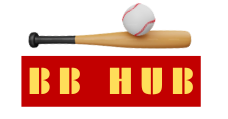What is a Balk in Baseball?
In baseball, there are a multitude of rules and regulations that dictate how the game is played, making it one of the most intricately detailed sports in the world. One such rule that often leaves both fans and players perplexed is the “balk.” What is a balk in baseball, and why does it matter? Let’s get into this quirky aspect of America’s pastime.
The Origins of the Balk Rule
The term “balk” itself is derived from the Dutch word “balken,” meaning to boast or show off. In the early days of baseball, pitchers would use various tricks and deceptive moves to gain an unfair advantage over base runners. These tactics, often seen as showing off or boasting, led to the coining of the term “balk.”
Understanding the Balk Rule
A balk is a penalty assessed against the pitcher. It occurs when the pitcher makes an illegal motion or action, typically while on the pitcher’s mound, with a runner or runners on base. The key aspect of a balk is that it allows any runners on base to advance one base.
Common Balk Offenses
Several actions can result in a balk. These include:
- Faking a pitch without delivering it.
- Interrupting the pitching motion once it has begun.
- Not stepping directly toward a base when throwing to it.
- Making an improper pickoff attempt.
- Disengaging from the pitching rubber with the pivot foot while stepping toward the plate.
How Umpires Determine a Balk
Umpires are responsible for determining whether a balk has occurred. They closely monitor the pitcher’s movements and compare them to the rules set forth by Major League Baseball. If they believe a pitcher has committed a balk, they signal the violation, allowing base runners to advance.
Notable Balk Incidents in Baseball History
Over the years, there have been several memorable balk incidents in baseball history. One of the most famous occurred during the 1988 World Series, when Los Angeles Dodgers pitcher Jay Howell was called for a critical balk, altering the course of the game.
Users also Read: Hide Used to Cover Baseballs in 1975
Types of Balks in Major League Baseball: Rules and Violations
Now, let’s explore the 13 distinct balk rules that every pitcher and baseball enthusiast should be aware of:
Rule 1: Failure to Pitch Home
A pitcher makes his natural pitching motion but fails to actually deliver the pitch to home plate.
Rule 2: Feint to 1st Base
The pitcher feints or fakes a throw to 1st base while touching the rubber but fails to make the throw. However, the pitcher can fake a throw to 2nd or 3rd base as long as there are runners on base. If the pitcher steps back off the rubber, they are not obliged to throw.
Rule 3: Failure to Step Toward a Base
The pitcher fails to step directly toward a base before throwing to that base. Umpire’s judgment determines whether the pitcher stepped toward the base within a 45-degree angle.
Rule 4: Throws to an Unoccupied Base
A pitcher cannot throw to an unoccupied base except when making a play. For example, if a runner breaks for second, it’s acceptable to throw to 2nd base even if the runner initially turned towards first.
Rule 5: Illegal Pitch
Making an illegal pitch, such as a quick pitch or pitching from off the rubber, is a balk violation.
Rule 6: Delivering to a Batter Not Facing the Pitcher
The pitcher delivers the ball to the batter while the batter is not facing them, which is considered a deceptive move.
Rule 7: Pitcher’s Motion Without Touching the Rubber
The pitcher makes any motion naturally associated with the pitch while they are not touching the rubber, which can deceive the baserunners.
Rule 8: Unnecessary Delays
The pitcher unnecessarily delays the game, causing delays or disruptions that can affect the pace of the match.
Rule 9: Faking a Pitch Without the Ball
A pitcher fakes a pitch without the ball. Whether the pitcher is on the rubber or not, this action is a balk.
Rule 10: Hand Off the Ball
After coming to a legal pitching position, the pitcher removes one hand from the ball (other than releasing the ball on the throw), which can mislead the baserunners.
Rule 11: Dropping the Ball
The pitcher accidentally or intentionally drops the ball while on the rubber, creating confusion among the players.
Rule 12: Catcher’s Balk
When delivering an intentional base on balls, the pitcher pitches while the catcher is not in the catcher’s box. The catcher has to start in the catcher’s box and then move outside after the pitch leaves the pitcher’s hand to catch the ball.
Rule 13: Failure to Come to a Discernible Stop
The pitcher delivers from the set position without coming to a discernible stop. A change in direction is not considered a stop, which is commonly referred to as “rolling through the pitch.”
Impact on the Game
Balks can have a significant impact on the outcome of a baseball game. They often result in base runners advancing, which can lead to runs being scored or innings being prolonged. Thus, understanding the balk rule is crucial for both pitchers and base runners.
The Evolution of the Balk Rule
The balk rule has evolved over time to address various deceptive actions by pitchers. Changes and amendments have been made to ensure fair play and prevent pitchers from gaining an unfair advantage.
Changes and Amendments
Throughout baseball’s history, there have been numerous changes and amendments to the balk rule. These updates reflect the ever-evolving nature of the game and the need to maintain fairness.
Balk vs. Pickoff Move
It’s essential to distinguish between a balk and a pickoff move. While both involve the pitcher’s actions on the mound, a balk penalizes a deceptive or illegal motion that affects base runners, whereas a pickoff move is a legal action intended to catch a runner off base.
Controversies and Disputes
Like many rules in sports, the balk rule has not been without its share of controversies and disputes. Some balk calls have been met with criticism, leading to debates about the consistency of umpire rulings.
Users Also Read : RHP in Baseball
The Balk Rule in Modern Baseball
In today’s baseball, the balk rule remains a critical part of the game. It serves as a mechanism to ensure fair play and keep the pitcher’s actions in check.
Strategies to Avoid Balks
For pitchers, understanding and avoiding balks is essential. Various strategies and techniques can help prevent balks and keep base runners in check.
Can a balk result in ejection for a pitcher?
No, a balk typically results in base runners advancing, but it does not lead to the ejection of the pitcher.
How often do balks occur in professional baseball?
The frequency of balks in professional baseball can vary, but they are relatively rare compared to other rule violations.
The most common type of balk offense?
Faking a pitch without delivering it is one of the most common types of balk offenses.
Are balk rules consistent across all levels of baseball?
The basic balk rules are consistent across all levels of baseball, but there may be slight variations in interpretation by umpires.
Can a balk be called after the play has concluded?
No, once a pitch is made, a balk cannot be called retroactively, and the play stands.
Conclusion
A balk in baseball is a penalty assessed against a pitcher for making an illegal motion or action with runners on base. It has a long history and has seen its fair share of controversies. Understanding the balk rule is vital for both pitchers and base runners, as it can greatly impact the outcome of a game.

